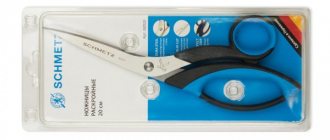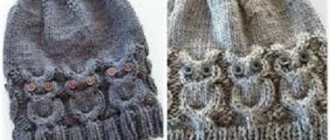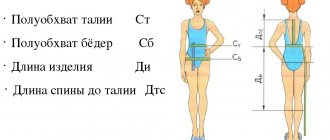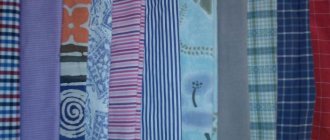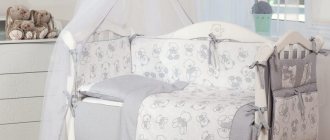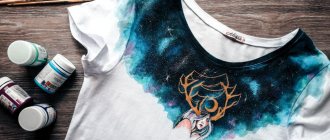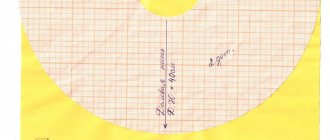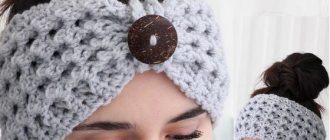Despite the fact that the bed linen market is growing every year, it is not always possible to find a bed that is suitable in size, fabric, color and other parameters. That is why handmade tailoring does not lose its relevance. Previously, all housewives could sew even a duvet cover, even a dress, as this was one of the housekeeping skills. Today only a few people know how to sew. Today we will talk about how to sew bed linen yourself, what you will need for this, and also teach you how to calculate the required amount of materials.
What you need
Particular attention is paid to the choice of fabric. It provides a comfortable sleep. Material required
must be hypoallergenic and natural. It is important that the fabric breathes and absorbs moisture well. It is equally important that the bed does not become electrified and does not slip too much. It is not recommended to sew a bed from synthetic materials or a mixture of natural and synthetic ones. They do not allow air to pass through, so they cause discomfort during sleep.
The price range for bedding materials varies from affordable for every wallet to quite high. Many housewives choose cotton. This is the best option in terms of price and performance properties. Cotton is easy to wash, absorbs moisture during sleep, and does not deform. The disadvantage of cotton fabrics is shrinkage at the beginning of use. It accounts for up to 7% of the size. When choosing such a material for sewing, it is necessary to take this fact into account and make a reserve when measuring.
Making a bed is possible not only from cotton. The following fabrics are also suitable:
- Calico is an inexpensive material that has the properties necessary for bedding. It tolerates washing well, is wear-resistant, does not lose color for a long time, and does not fade.
- Chintz is considered the most inexpensive natural fabric. It is inferior in wear resistance to other materials, and quickly loses its appearance. Chintz is breathable and does not cause allergic reactions.
- Satin is a strong and durable material. It is more expensive than cotton, but the price is justified by its service life.
- Flannel has characteristics similar to calico. It provides a comfortable sleep and lasts a long time. Over time, the fabric becomes softer and more pleasant to the body.
- Silk is an expensive and high-quality material. Beginning seamstresses should not use it for sewing bedding, as it is difficult to work with without experience.
- Linen is a high-quality, natural and environmentally friendly product. Its use for sewing linen yourself is not recommended due to its rigidity. The cost of the fabric is above average.
Before sewing bed linen, you should also stock up on the following materials and tools:
- threads;
- sewing machine;
- pins;
- scissors;
- needles.
To sew a high-quality bed, you need to pay attention to the threads. It is recommended to choose synthetic threads. They do not fray and retain their shape longer. The label says 100% polyester. It is better to give preference to threads made from Polstrong, Durafix or Capitonne threads.
Materials for sewing bed linen
To ensure that your efforts are not in vain, choose your source materials wisely. Properly selected fabrics and threads are the key to the quality of a sewn product and its durability.
Fabric selection
In this matter, be guided by your own preferences or family budget when it comes to saving. But natural fabrics are not only pleasant to the tactile sensation, but also more useful: due to their hygroscopicity, they “breathe”, in the summer heat they “cool”, and in winter they can warm. For sensitive children's skin, as well as for allergy sufferers, natural fabrics are the safest.
Flannel is used when sewing sets for little ones
They differ not only in price, but also in density, type of thread twist, and wear resistance:
- The cheapest is chintz, but it is very thin and does not withstand a large number of washes and wears out quickly.
- Calico enjoys well-deserved popularity. This is a durable material with high density and a somewhat rough structure, but this is precisely why many people love it. During use, calico products become softer without losing their strength.
- Flannel is used when sewing sets for the little ones.
- Linen is a hypoallergenic, durable fabric. The only negative is the high price.
- Silk is also an expensive material. Silk sets look noble, are very pleasant to the touch and are durable.
- Satin is similar in appearance to natural silk, but is made on a cotton basis, so it is affordable in price.
Selection of threads
If natural fabrics are the best choice when sewing bedding sets, then cotton threads are not the best option, despite their naturalness. Seams made of synthetic threads based on polyester are characterized by high strength and wear resistance during operation.
To determine its quantity when purchasing, you need to know the size of the bed
Shape selection
Previously, all mattresses and pillows had standard sizes, so the choice of shape was not so important.
There are different shapes of mattresses and pillows available on the market today. If you need a sheet for a sofa bed, a regular sheet without elastic will do. For a traditional bed, many people choose a bed with elastic bands, which provide a tighter fit and better grip. Pillows also come in different sizes and thicknesses. Many people are faced with the fact that when buying a pillowcase that seems to be the right size, they cannot put it on the pillow, since it is very “high” and does not fit into the pillowcase. When sewing, it is recommended to add a few centimeters to the thickness.
Secrets of how to sew bed linen
A few tips will help you simplify the sewing process and achieve high-quality performance of the product:
- Please note that natural fabrics shrink greatly when washed. To avoid mistakes with cutting, pre-wash the fabric and iron it before cutting. Such preparation has another advantage - you can check the quality of the fabric coloring. If it sheds a lot, then it is better to stop using it.
- The hole in the duvet cover for tucking the blanket can be made in 2 ways - on the wide or narrow side. Make the decision yourself, focus on how you feel comfortable tucking the blanket. If the hole is located on the side, then make it at least 65 -70 cm to make it easier to adjust the edges of the blanket.
- If desired, the hole is left open by sewing the raw cuts into a hem. But there are other design options using buttons, zippers, ties or Velcro.
- It is more profitable to buy fabric with a width of 2.2 m than 1.5 m. In the first case, there is less material leftover.
- When cutting pillowcases, consider the height of the pillows. Add a couple extra centimeters around the edges. Do the same when making a duvet cover pattern.
When calculating the width of the sheet, be guided by the height of the mattress so that it can be tucked. Bed linen manufacturers love to save on the width of sheets, and narrow sheets move and crumple during sleep.
Pattern
An experienced seamstress carries out sewing without using a pattern for a duvet cover, pillowcase and sheet, but a novice master needs it. On the Internet you can find diagrams for any size bed. You can also use our examples of cutting bed linen.
Option 1
Option 2
Calculation of fabric for children's bedding
Let us illustrate more clearly with an example of sewing children's bedding. Let's take a mattress 90 cm wide and a pillow measuring 60 cm by 60 cm.
We calculate the canvas.
- 1 sheet - you will need approximately 120cm x 2. If you want to tuck the edges under the mattress, add a little more padding around the edges. The pass is calculated based on the height of the mattress.
- Duvet cover - raw materials are calculated based on the size of the blanket under which it is actually sewn. It turns out: for a 1.2 m blanket you will need - two widths + 10 cm allowance + 10 cm for shrinkage + 10 cm so that the blanket is free = 2 m 70 cm + 10 cm seams.
- 2 pillowcases – their size remains the same as the size of the pillows + 10 cm, leave seams sewn and another + 10 for shrinkage. Cut the pillowcase along the material to make the process more economical.
By summing up all the necessary measurements, we will get the exact amount of fabric that will be needed in the process of sewing a bedroom set. It’s better to protect yourself - buy with a reserve in order to avoid troubles later.
Elements of children's bedding - cut to a fabric width of 150 cm
Step-by-step description of production
So, we sew bed linen with our own hands. Before you start sewing, you need to cut the bed linen correctly. To do this, use a pattern. Before cutting the fabric, you can make your work easier by drawing the future product on the material with crayons or a bar of soap.
Sewing sheets
If the size of the sheet covers the entire width of the fabric, then there is an edge on both sides. In this place, processing of the material is not necessary, since the edge does not unravel when washed. In untreated areas, the bed needs to be treated. To do this, make a hem around the perimeter of 1 cm and the same amount again, then stitch.
Sewing a duvet cover
Sewing steps:
- Fold the cut fabric in half with the wrong side out.
- Sew the fabric along the edge if the material is cut across the entire width.
- If not, make a line at a distance of 1.5-2 cm around the perimeter, then process it with an overlocker. Don't forget to leave a hole for the blanket measuring 50-70 cm.
- Press the seams.
- Turn the duvet cover right side out.
- In the raw area (where the blanket goes), fold the fabric 1 cm into the inside of the duvet cover and stitch.
- If the hole is large, you can sew in a lock or sew on buttons.
- Press the seams.
Sewing a sheet with an elastic band yourself
It looks like this:
Rice. 8 — sheet with elastic
How to do it: first of all, you need to measure out as much fabric as will go to the top (where you will sleep) + to the fold to which the elastic is sewn.
What are we doing:
- We calculate the fold line: from the middle of the mattress we set aside half the width of the mattress + half its thickness;
- We calculate the length - add up the width and length of the mattress.
Rice. 9 - diagram for calculating the size of a sheet with an elastic band
Before producing such a thing, the material must be washed several times in very hot water, since the new fabric shrinks greatly after the first two or three washes and, when sewn, simply does not fit on the mattress.
Sewing a duvet cover with your own hands
Rice.
10 - sewing pattern for a duvet cover We already know the width of the fabric, we are interested in the length:
The length of the blanket to be used is multiplied by two and a safety net of twenty centimeters is added (as you already understood, for possible errors + for shrinkage after heat treatment).
So, we fold the resulting segment in half and five millimeters from the edge we connect it along seam A from the diagram:
Rice. 11 - connection along seam A
Fold back the remaining half a centimeter:
Fig. 12 - working with the base for the seam
We sew according to scheme B:
Fig. 13 - work according to scheme B
We do the same according to scheme C, not forgetting the segment into which we will insert the blanket (half a meter is enough):
Rice. 14 - work according to scheme C
Then we turn the duvet cover inside out and check:
Rice. 15 - this is what the front side looks like
We align the fold lines for greater beauty:
Rice. 16 - smoothing out folds
Don’t forget to take care of decorating the hole for the blanket:
Rice. 17 - taking care of the pocket
To prevent it from unraveling, we hem the free bend with two parallel stitches, as in the picture above.
Outside, if you wish, you can do the same:
Rice. 18 - similar work for external corners
If you are not a fan of the blanket clumping inside the duvet cover - for such a situation, the diagram provided Velcro along the edges of the wrong side - sew them on:
Rice. 19 - Velcro
Rice. 20 - initial attachment
Rice. 21 - sew Velcro to the wrong side
To make it more convenient to put the resulting creation on the blanket, we connect two Velcro strips in the process:
Rice. 22 - correct use of Velcro
Choosing the right thread
The quality and strength of the set will depend on what threads are used to sew the set.
You should pay attention to the thickness, strength, quality and color of the threads.
For sewing, polyester threads “Durafix” (Türkiye) are considered the best. Professional threads are made from durable polystrong.
Capitone threads are weightless, durable, suitable for sewing even thick materials.
Threads almost always come with designations: LH - linen cotton; LL – flax lavsan. The numbers indicate the thickness of the thread.
Threads made from 100% polyester are much stronger than natural ones. They hardly delaminate and have a high degree of tension. High-quality thread is easy to identify: it has a flat, smooth surface. The line laid by such specimens turns out smooth and clear.
Recommendations for fabric calculation
Every housewife knows which bed she will need bed linen for. And for each bed you need to take the correct measurements. Usually, each type of sleeping place has standard dimensions, which means you can trust the dimensions given below. From them we will find out how much fabric is needed for sewing.
2 bedroom set
To make a double set, you will need:
- for a duvet cover – 200/200; 180/210; 180/210;
- sheets – 175/210; 200/220; 210/230;
- pillowcases – 50/50; 60/60; 50/70.
For a duvet cover measuring 180x180, fold a piece of linen in half + an allowance of 5 cm = 365 cm.
- Cut the sheets - 200 cm + allowance 5 = 205 cm.
- For a pillowcase – 125 cm.
Thus, to make the entire set you will need 6 m 95 cm.
Layout of fabric for 2 bedroom set.
For 1.5 bedroom set
Most often a 1.5 bedroom set is required. Fabric consumption for duvet cover:
- We will need 150 cm, but take 155 cm + an allowance of 5 cm, multiply by 2, the cost per duvet cover is 310 cm.
- For a sheet - 155 cm of fabric, including 5 cm for the hem. There is still 15 cm left in stock. If you need a longer length, then it is enough for any product.
- For pillowcases 60 by 60 cm you will need 120 cm plus 5 cm for the hem.
- Result: duvet cover 310 cm, sheet 155 cm, pillowcases 125 cm, that is, you need 590 cm.
1 bedroom set
A single set is usually made for children and teenagers. For it, you can take material with a width of 150 centimeters. To make 1 sleeping duvet cover, you will need 215x143 cm. For a sheet - 120x203 centimeters.

